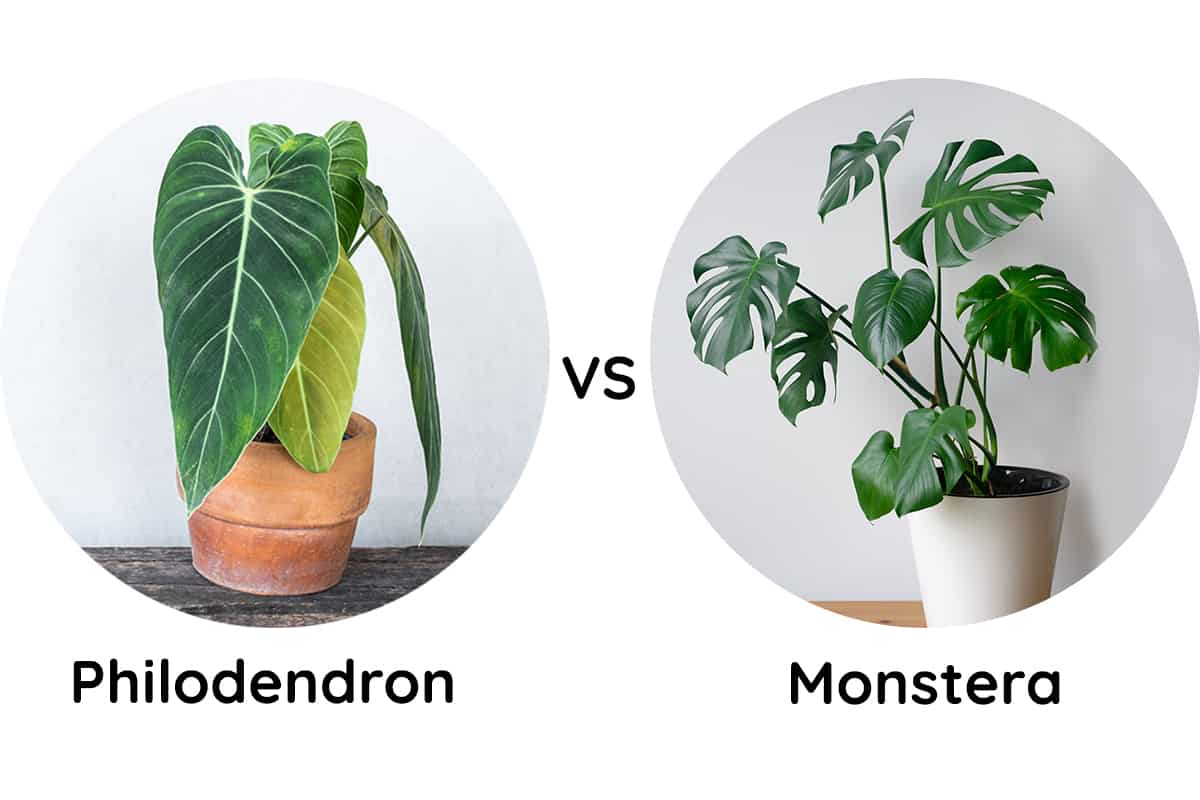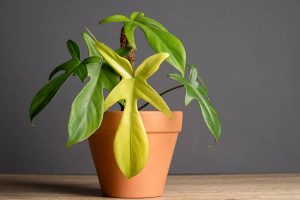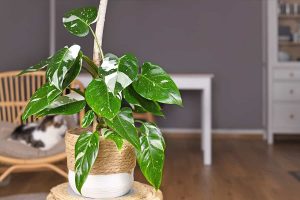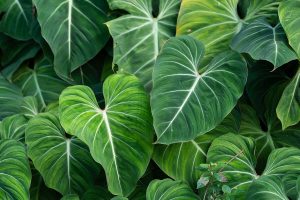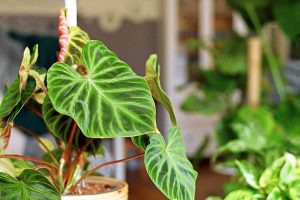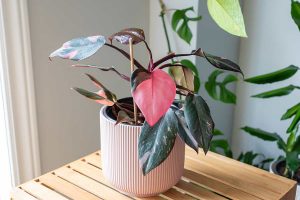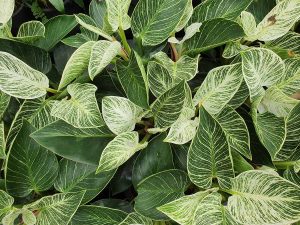‘Philodendron’ and ‘Monstera’ are two names that you might hear used frequently to describe what is seemingly the same plant. Are these two names, in fact, just synonyms for each other, or are they used to denote different types of plants?
Here we investigate why these names are sometimes accepted as being the same, as well as the primary differences and similarities between Philodendron and Monstera plants to help set them apart.
Table of Contents
Are Philodendron Plants and Monstera Plants the Same?
No, these two genera of plants are not the same. However, their names are often used interchangeably because many Philodendron plants and Monstera plants possess many similarities, which can lead to much confusion.
Philodendron and Monstera are two entirely different types of plants, but it is common to see these plants mistakenly labeled under the wrong name, even amongst experienced growers.
Why Are Philodendrons and Monsteras Sometimes Confused?
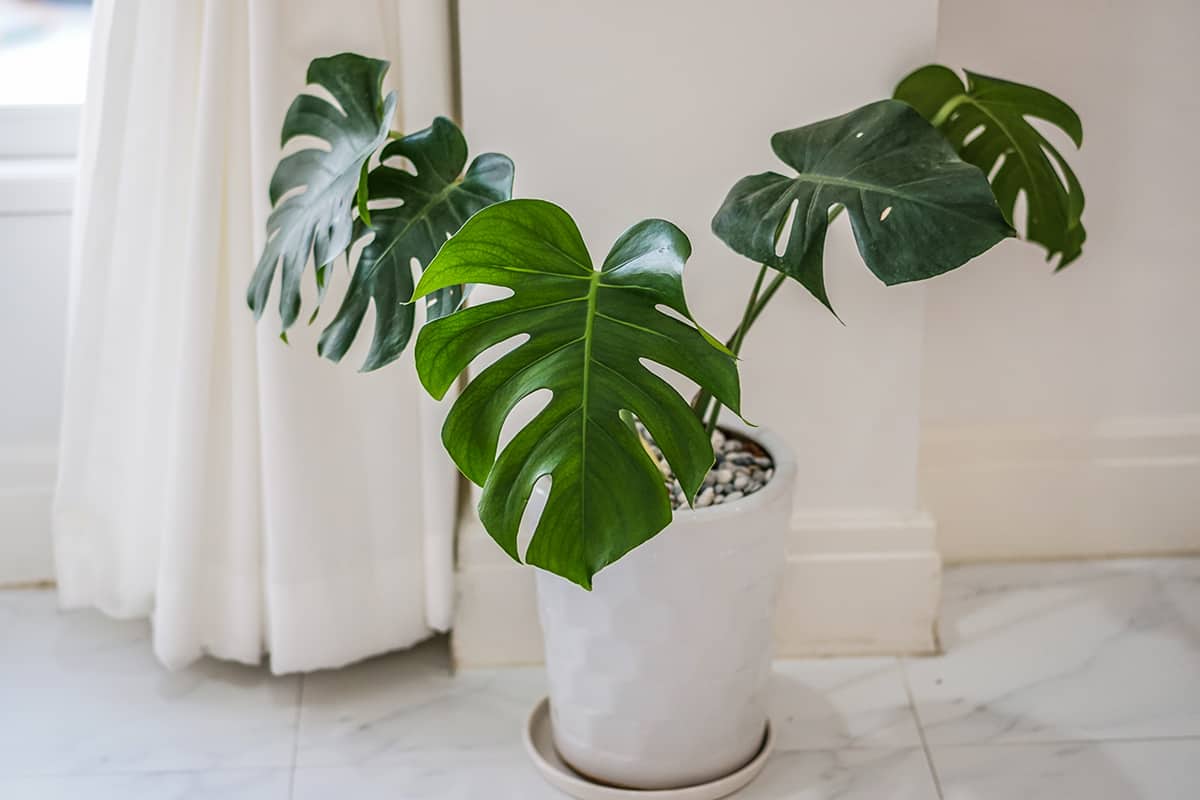
There are just under 500 different species of plants that fall under the Philodendron genus and 49 which fall under the Monstera genus. Among these, there are many types of Philodendron plants that possess similarities to some types of Monstera plants. There are some specific species that are commonly confused; for example, the Philodendron bipinnatifidum is widely known as the ‘split-leaf philodendron’, and the Monstera Deliciosa also goes by this same name.
These two plants have visual similarities in that they both have large green leaves with splits in, but there are some obvious differences. The Monstera Deliciosa’s young leaves are heart-shaped, with no splits, so these immature plants can often get mistaken for the Philodendron hederaceum, commonly known as the heartleaf philodendron due to its heart-shaped foliage.
Philodendron and Monstera Similarities:
There are so many similarities between Philodendron and Monstera plants, which of course, explains why these two plant genera so often get mistaken for each other in the first place. Here we look at the commonalities between these two genera of plants, which range from aesthetic similarities to similarities in care requirements and natural habitats.
Botanical families
Both the Philodendron and Monstera genera belong to the Araceae family. This means that Philodendrons and Monstera plants are all aroids. This family contains 140 genera, with just under 4000 different species within this.
Habitat and care
Philodendron and Monstera are tropical plants. They commonly grow in similar habitats of rainforests, where they receive dappled light beneath the overhead canopy of shade provided by taller trees. Both types of plants are accustomed to high levels of humidity, nutrient-dense soils, warm temperatures, and moist conditions.
This means that both types of plants prefer the same type of care when they are kept as houseplants. They thrive at average room temperature, with indirect bright light, moist soil, and higher than average humidity levels. As the care of both of these types of plants is so similar, it won’t matter too much if you accidentally mistake your Philodendron for a Monstera or vice versa because the care you give them will be the same either way.
Leaf shape
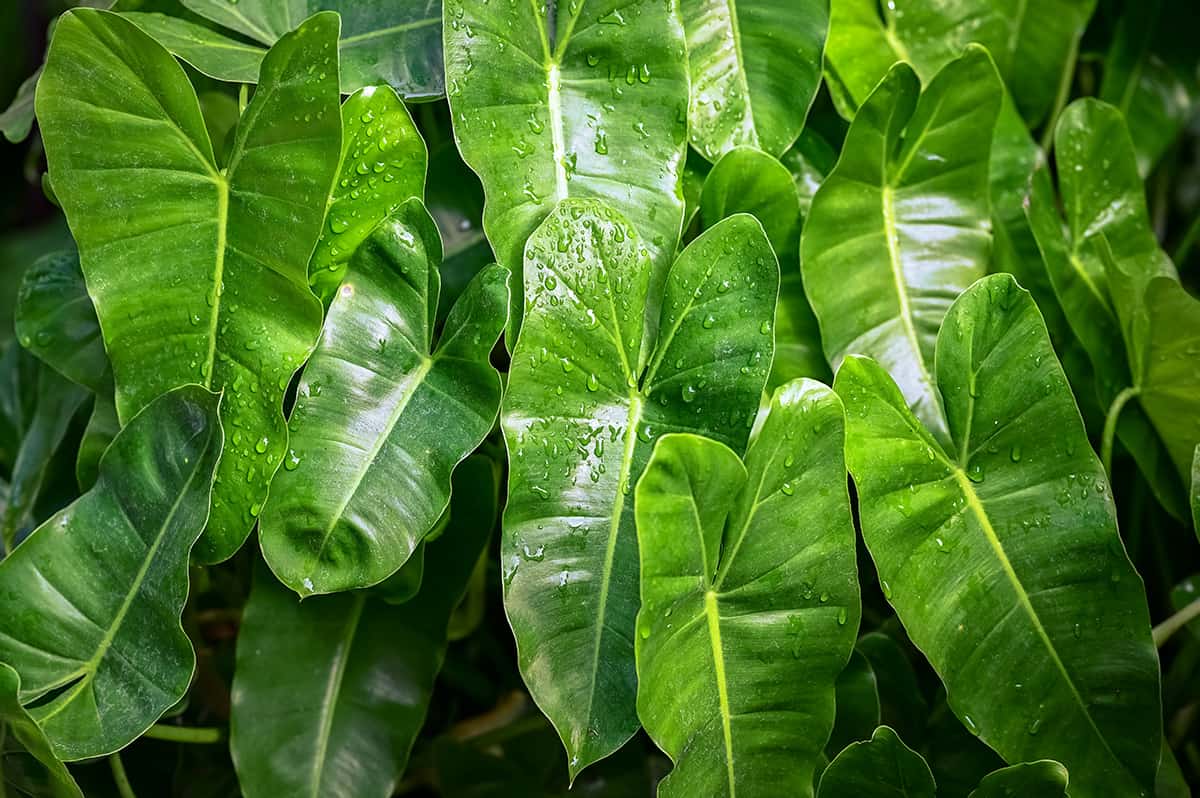
The leaf shape of many Monstera and Philodendron plants is very similar. Philodendrons are known for their heart-shaped leaves, which sometimes extend to stretched hearts, arrow-shaped leaves.
Many Monstera plants also have heart-shaped leaves, such as the Monstera Deliciosa and the Monstera Adansonii. The similar leaf shape is a key reason why these two genuses of plants get mistaken for each other.
Leaf size
The most commonly mistaken Philodendron and Monstera plants are the Philodendron Bipinnatifidum and the Monstera Deliciosa. Both plants look strikingly similar, and their massive leaf size only adds to the confusion. In their native habitat, a single leaf on the Philodendron Bipinnatifidum can span up to 3 feet in length, and the leaves of the Monstera Deliciosa will also typically grow to between 1 and 3 feet long. When grown as a houseplant, both types of plants will have a reduced maximum leaf size.
Split leaves
Several types of Philodendrons have split leaves, which we also see in numerous Monstera species. Interestingly, the type of splits in these two genuses of plants is different, and if you can get to grips with the different types of splits on plant foliage, then this is a key way you can differentiate between the two genuses.
However, on the surface, both Philodendrons and Monstera plants seem to have splits in their leaves, which is why they can often get mistaken for each other.
Growth habit
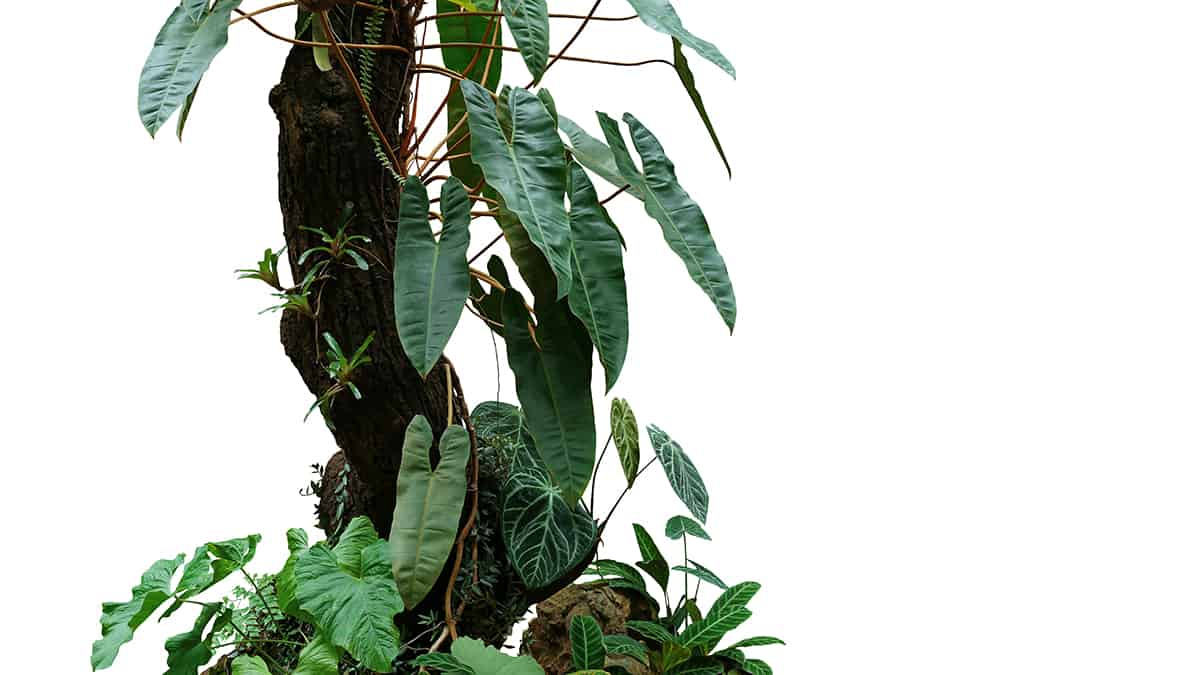
Most types of Philodendrons are climbing or creeping plants. In their native habitat, they will creer along the rainforest floor or climb their way up the trunks of trees and other larger plants. Some Philodendron plants are also epiphytic in nature, meaning they grow on the surface of other plants rather than in the soil.
Monstera plants also possess many of these qualities. Most Monstera plants are also climbing plants, some of which grow on vines like Philodendrons, such as the Monstera Adansonii. Monstera plants can also be epiphytic, such as the Monstera Deliciosa, which can be seen in its natural environment growing on the trunks of trees.
Foliage color
Both Monstera and Philodendron plants typically have deep green colored leaves. More often than not, the texture of the foliage on both types of plants will be reasonably thick, glossy, and sometimes leathery. Many types of Philodendron and Monstera plants also have variegated leaves with white, cream, or silver markings.
Flowers
All flowers of aroid plants (those in the Araceae family) are referred to as spadix. These are a fleshy, spear-like shape, and will typically emerge out of a leaf-like bract or a spathe. Though both Philodendron and Monstera plants are very unlikely to flower when grown as houseplants, they could be mistakenly identified in the wild due to the similar flowers they produce.
Native regions
Both Philodendron and Monstera plants are native to South America and other tropical regions of the Americas.
Philodendron and Monstera Differences:
Philodendron plants and Monstera plants have plenty of similarities. So much so that identifying them from each other can be complicated. Fortunately, there are some defining features of both of these plant genuses which can help you to distinguish one from the other. Here we look at the key differences between Monstera and Philodendron plants, which you can use to set them apart.
Fenestrations and Pinnations
Some Philodendron and Monstera plants have split leaves. However, the type of splits in the leaves are different. Monstera plants have fenestrations, while Philodendrons have pinattions. The difference between these two types of split foliage is subtle but important.
Fenestrations can take the form of holes in the leaf, which do not extend to the outer edge, although as the plant matures, the fenestration split will extend to the edge of the leaf. However, the fenestration will not meet the middle of the leaf where its central vein is.
Meanwhile, a pinnation is defined as a split that starts at the central vein of a leaf and extends all the way to the end. You will notice on Monstera plants, most notably the Monstera Obliqua and the Monstera Adansonii, that the splits are in fact much more like holes rather than slits. Being able to identify the difference between the type of split in a leaf is a key way to distinguish between Philodendron and Monstera species.
Cataphylls
Both Philodendron plants and Monstera plants have cataphylls. These are the encasings around a leaf that protects it as it emerges from the stem.
In most Philodendrons, once the leaf has formed, it will shed the cataphyll, while Monstera plants will hold onto it, and it will dry out and form part of the stem. If you notice cataphylls falling from your plant after a new leaf has formed, you can be sure it is a Philodendron.
Knee-joints
Another key identifying feature between a Monstera and a Philodendron is the so-called ‘knee-joints’ you can find on Monstera plants. These joints are scientifically known as ‘pulvinus’ or ‘geniculum’.
They are found on the main stem of Monstera plants, and they are able to move so that the leaves on the plant can follow the sun as it also moves. Philodendron plants do not possess these types of joints, and as such it can be used as a key identifier when trying to determine if a plant is a Philodendron or a Monstera.
Plant height
If you are fortunate enough to see these plants growing in their native habitats, the ultimate size of the plants can be a great way to tell them apart. Monstera Deliciosa and Philodendron Bipinnatifidum are the most commonly mistaken plants in these genuses, with their huge leaves and dramatically split foliage.
Although they have many similarities that can make them very tricky to distinguish from each other, they have a very obvious differences. Mature Philodendron Bipinnatifidum growing in the wild will reach ultimate heights of around 15 feet, whereas a Monstera Deliciosa can reach unbelievable heights of up to 70 feet.
